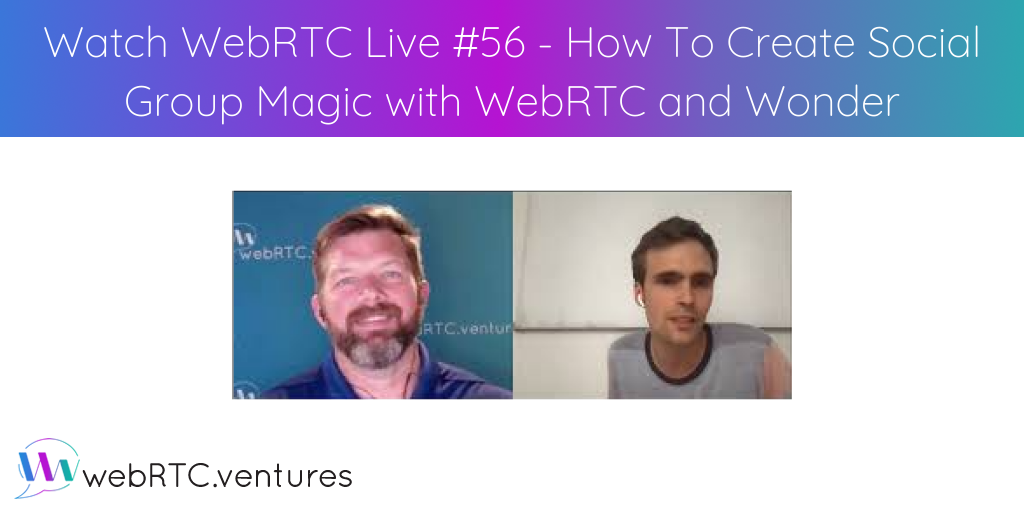On the June 16, 2021 episode of WebRTC Live, Arin Sime was joined by Wonder Co-Founder Leonard Witteler, to talk about “How To Create Social Group Magic with WebRTC and Wonder.” Leonard and his team have used WebRTC to build a virtual space for groups to meet, talk, exchange ideas, and work together.
We were first introduced to Wonder through the WebRTC UnConference, a great community open source discussion about WebRTC. What we thought was at first another networking tool for virtual business conferences is actually quite different. Wonder allows everyone to jump on stage. Everybody is in the conversations that they want to be in. And, they can switch freely between them, creating a group dynamic that is so much more than the 1:1 aspect of networking.
As Leonard describes, Wonder is ultimately about human connection. Their interface paradigm allows you to replicate what is possible in the offline world.
In this episode, Leonard describes the evolution of the technology and architectures that made Wonder possible, from its start as an audio-only mesh network. They currently use a multiple-provider scenario, which is a trend we see a lot of in our work at WebRTC.ventures: combining different architectures and commercial providers for specific use cases. For Wonder, Agora provides benefits in broadcasting, while Twilio is best for social circle conversations. They also use MediaSoup, as was also discussed in our last episode with Manik Sachdeva from Around.
Arin and Leonard talked about spatial paradigms (UX-driven vs. algorithm-driven), subscriptions, changing layouts, scaling, connection-state issues, optimizing server resources, and pricing, before moving on to a larger WebRTC ecosystem discussion.
Watch Episode #56!
Do you have a topic that you would like to see discussed on WebRTC Live? Let us know by emailing news@webrtc.ventures.
Never miss an episode of WebRTC Live, our webinar series hosted by WebRTC.ventures Founder and CEO, Arin Sime. We feature the latest use cases and technical updates to this increasingly popular coding standard for live video. Watch past episodes on our WebRTC Live page, our YouTube channel, and on our blog. Better yet, use the form in the right sidebar to join our mailing list and be among the first to know about upcoming episodes and the latest news in WebRTC!











